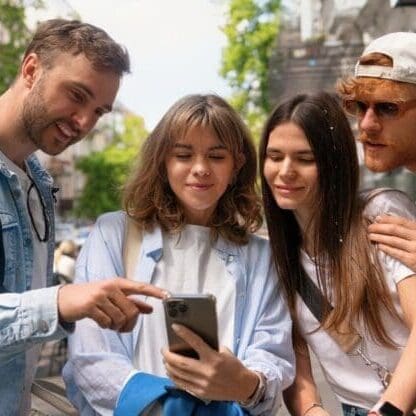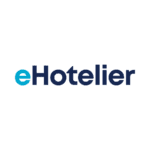 Stepping into the shoes of a CEO, imagine seeing your revenue figures climbing, yet your profitability remaining stagnant, or even worse, declining. It’s a frustrating and bewildering experience, as your efforts to drive growth only lead to increased costs. Your Customer Acquisition Costs (CAC), Costs of Goods Sold (COGS), and operating expenses inflate as revenues rise, leaving your profit margins in the dust.
Stepping into the shoes of a CEO, imagine seeing your revenue figures climbing, yet your profitability remaining stagnant, or even worse, declining. It’s a frustrating and bewildering experience, as your efforts to drive growth only lead to increased costs. Your Customer Acquisition Costs (CAC), Costs of Goods Sold (COGS), and operating expenses inflate as revenues rise, leaving your profit margins in the dust.
As a CEO, you’re consistently tasked with steering the company’s vision toward growth and sustainability. However, a central shift in perspective is crucial to ensure this success – moving away from solely focusing on total revenue and prioritizing profitability.
The revenue focus often originates from overemphasizing revenue generation without adequately considering profitability. Increasing revenue is undeniably vital for any business’s growth and survival. However, without a complementary focus on profitability, you might find your hotel trapped in a cycle of cost escalations, consuming the additional revenue you’re working so hard to create.
The solution lies in a strategic focus shift: optimizing the revenue mix for maximum profitability. Rather than simply maximizing revenue, the objective becomes generating the most profitable revenue. This involves understanding the profitability of each revenue source – a journey that begins with a deep understanding of CAC and COGS for each revenue stream.
Embarking on this path is a complex task. It requires careful analysis, strategic decision-making, and aligning efforts across your team. However, the potential rewards – improved profit margins, a more sustainable business model, and greater financial resilience – make it worthwhile. Here is a checklist for the CEO to implement a profit-oriented revenue perspective.
Building the profit-oriented revenue management framework
Understanding the concept of Profit-Oriented Revenue and its role in your profitability narrative is paramount. It’s not just about how much revenue each product or service brings in but also how much it costs to deliver these offerings. Comprehending these variable costs can provide a clearer picture of the actual profit associated with each revenue source.
Decisions should be rooted in assessing different costs tied to various revenue streams. Acknowledging the direct and indirect costs of providing a room, a meal, or other service gives a realistic perspective of the profit margins. It’s not enough to increase sales; we should focus on selling what brings us the most profit.
But these decisions and understanding should not reside only at the top. As a CEO, you must ensure this knowledge is top of mind within your commercial team – from sales and marketing to revenue management. Encourage them to grasp the notion of costs and profitability thoroughly. Incorporate these concepts into their routine performance metrics, creating a unified, profit-centric mindset across the hotel.
Finally, remember to assess these costs regularly and adjust your strategies accordingly. The market dynamics are ever-evolving, and so should your approach to profitability. As a CEO, this shift from revenue maximization to profitability optimization is the key to long-term success.
As a CEO, your first action is to construct a robust profitability framework:
- Shift the traditional P&L model to a Profit-Oriented Revenue Management (PORM) model. Your P&L should show Total Revenue – Customer Acquisition Cost (CAC) = Contribution – Cost Of Goods Sold (COGS) = Gross Profit.
- Train your team to understand and use this model. This step is critical for the model to become a valuable tool in your operation. Setting incentives on profit levels instead of total revenue will make people adopt profit-oriented thinking faster.
- Regularly review the P&L statements with your team, focusing on profitability levels and their implications.
Understanding the current CAC and COGS
The next step is to dig deeper into the current CAC and COGS. CAC is a critical metric in the hotel industry. It’s the total cost of acquiring a customer, considering marketing, sales, and other related expenses. Understanding and optimizing the CAC can significantly enhance your hotel’s profitability, especially with a firm grasp of COGS.
Understanding the relationship between CAC and COGS
There’s an intrinsic link between your CAC and COGS. When you focus on promoting and selling high-profit revenue sources, where COGS is well managed and marginal profit is high, you effectively leverage your CAC for the best possible return. You’re investing in acquiring customers who bring you the most profit, maximizing the return on your acquisition expenses.
Targeting the right customer segments
Segmenting customers based on their preference for your high-profit services helps to optimize CAC. Your marketing and sales efforts become more efficient as they are concentrated on attracting guests who are more likely to opt for these services. This brings down your CAC and boosts profitability by driving up the proportion of high-margin revenue.
The role of data analytics
Leveraging data analytics can help identify which customer segments have the highest affinity for your profitable services and the optimal marketing channels to reach them. This intelligence guides your marketing spend, ensuring the most efficient use of resources and reducing the CAC.
Direct booking strategies
Promoting direct bookings is another effective strategy for lowering CAC. It reduces dependency on third-party platforms that charge commission fees. With a clear understanding of your high-profit services, you can create compelling packages and offers to encourage direct bookings.
Balancing act
Optimizing CAC should not compromise the guest experience or brand image. Maintaining a balance is essential – while focusing on high-profit services, the overall guest experience must remain satisfactory to ensure customer loyalty and repeat business.
Understanding COGS
The team needs to understand two key concepts that form the foundation for increased profitability: Cost of Goods Sold (COGS) and marginal profitability.
Simply put, COGS represents the direct costs of producing the rooms, products, and services a hotel sells. This could include food and beverage costs for a restaurant, room cleaning and maintenance costs for rooms, and labor and material costs for additional services such as spa treatments or conference facilities.
Understanding COGS is crucial for several reasons. Firstly, it directly impacts your profit margins – higher COGS means lower profit. Secondly, and more importantly for our discussion, COGS varies across different revenue sources. A room has different costs associated with it compared to a spa treatment or a restaurant meal. As a result, not all revenue is created equal – a critical insight that will guide our approach to revenue mix optimization.
Understanding marginal profitability
Marginal profitability refers to the additional profit a hotel can expect to earn by selling one more unit of a given service or product, considering both the revenue it brings in and the COGS associated with it. Simply put, it answers the question – how much does our profit increase if we sell one more room night, one more spa treatment, or one more meal?
Given its direct relation to profitability, marginal profitability should be a critical factor in any revenue management decision. For instance, if the marginal profit from selling a spa treatment is higher than that from a meal in a hotel restaurant, it may make more sense to focus your efforts on promoting the spa services.
Understanding COGS and marginal profitability helps you see beyond the revenue numbers and focus on what matters – profit.
As a CEO understanding your current CAC and COGS is crucial to start on the path of profitability:
- Break down the CAC for each revenue source. Understand the drivers behind these costs and where potential savings could be made.
- Similarly, analyze the COGS for each revenue stream. Encourage the team to find areas for cost optimization without compromising the customer experience.
- Please educate your team about these costs, the marginal profitability of all products and services, how they impact profitability, and the importance of monitoring them.
Educating the team about profitability
Now that we understand COGS and marginal profitability, it’s time to apply these concepts to analyze the profitability of each revenue source. Doing so requires a shift from a top-line focus (i.e., revenue) to a bottom-line focus (i.e., profit), considering both revenue generated and the associated COGS.
Calculating the profitability of each revenue source
To determine the profitability of each revenue source, we first need to calculate the net revenue it generates. This is achieved by subtracting the CAC associated with acquiring the customer. The next step is to subtract COGS associated with that revenue. For example, if you earn $200 from a room and the related cleaning and maintenance costs are $50, then the net revenue is $150.
But don’t stop at calculating net revenue. Remember our discussion on marginal profitability? We need to extend this calculation to understand how much additional profit we could generate from selling one more unit of each service or product. This requires factoring in the marginal COGS associated with that additional unit.
Understanding profitability dynamics
We want to understand these profitability dynamics because they greatly influence our revenue management strategy. Let’s say you find that your restaurant operations have a higher marginal profit than your spa. In that case, you should emphasize promoting your restaurant services more.
Remember, the goal isn’t to maximize revenue but to maximize profit. By understanding the profitability of each revenue source, we get a clearer picture of where to focus our efforts for maximum impact on the bottom line.
This doesn’t mean ignoring less profitable services. Instead, it’s about making informed decisions and finding the right balance in your revenue mix.<
Earning revenue is critical, but for long-term profitability, the focus must be on maximizing ‘profitable revenue.
Identify high-profit revenue sources
The first step is to identify the most profitable revenue sources. This process involves analyzing the COGS for each revenue stream, calculating the marginal profit, and ranking revenue sources based on their profitability. The commercial team should prioritize promoting and selling the highest-profit products and services.
Understand customer preferences
Understanding what your customers value most is critical to maximizing profitable revenue. You can use customer feedback, reviews, and data analytics to identify the services and amenities your guests appreciate. If these align with your high-profit revenue streams, you’ve found a sweet spot for boosting profits.
Pricing strategies
Pricing strategies play a crucial role in driving profitable revenue. Revenue management should use their understanding of demand elasticity and customer segmentation to set optimal prices that maximize profit margins.
Promotion and communication
Marketing and sales can drive profitable revenue by effectively promoting high-profit services. This might involve creating targeted campaigns highlighting the unique benefits of these services or providing special offers that bundle high-profit services together.
Upselling and cross-selling
With their direct contact with guests, the reservations team can contribute significantly by upselling and cross-selling. By understanding the profit potential of different services, they can effectively persuade customers to opt for higher-margin offerings.
Adopt a long-term view
While maximizing profitable revenue is essential, maintaining a balance is equally important. Don’t compromise on customer satisfaction and experience for short-term profit gains. A satisfied customer will likely be a repeat customer, contributing to long-term profitability.
As a CEO, you need a team that understands profitability and marginal profitability:
- Explain the profitability of each revenue source and the concept of marginal profitability to your team.
- Please emphasize the importance of considering these factors when making strategic decisions.
- Foster a culture that values profitable revenue, not just revenue.
The commercial team: key architects of profitability
As a CEO, leading this charge towards a profitability-first mindset is paramount. By building a solid framework, understanding your costs, and educating your team, you’ll be well on your way to fostering a culture prioritizing profit. It’s time to redefine success not merely as the highest revenue but as the most profitable revenue mix.
In a hotel environment, the commercial team comprises various roles, each instrumental in shaping and refining the revenue mix to maximize profit. This team, including marketing, sales, revenue management, and reservations, plays a significant part in understanding and minimizing COGS.
Marketing and sales
Marketing and sales teams lay the foundation by understanding and communicating the unique value of each revenue source to potential customers. They are involved in developing pricing strategies and promotional campaigns that highlight the most profitable services. But their responsibility goes beyond just selling. They also need to comprehend the COGS for each offering. This understanding enables them to strategically promote and sell services that generate higher profits while considering customer needs and preferences.
Revenue Management
Revenue management plays a pivotal role in optimizing profitability. Their knowledge of market dynamics, customer segmentation, and pricing elasticity aids in determining the best possible pricing strategies to maximize revenues and profits. But a successful revenue manager goes a step further. They need to recognize the COGS linked to each revenue source. This allows them to forecast profitability more accurately and adjust pricing strategies based on demand and profit potential.
Reservations
Reservations staff are at the front lines of the revenue generation process. They interact directly with customers and can influence their decisions about purchasing services. Understanding the profitability of each service empowers reservations staff to upsell and cross-sell more effectively. Knowing which services have the highest marginal profit, they can prioritize selling them to improve overall profitability.
As a CEO, you would want to ensure that a focus on profitability is an ongoing effort:
- Regularly assess the team’s understanding and application of the PORM model, profitability measures, and cost analyses.
- Continue educating and updating the team on changes and trends in profitability and associated costs.
- Reinforce the importance of their role in the profitability of the hotel.
Technology as an enabler: leveraging modern tools to understand and
manage CAC and COGS
Technology is pivotal in helping businesses make data-driven decisions in today’s digital era. This is especially true in the hospitality industry, where modern revenue management systems, data analytics, and other technological tools provide invaluable insights into CAC, COGS, and other key profitability metrics.
Data analytics
Data analytics is a powerful tool that can shed light on the profitability of different revenue sources. Advanced analytical tools can crunch large volumes of data to identify patterns, trends, and correlations. They can uncover insights such as which revenue streams have the highest profit margins, which customer segments prefer these services, and which marketing channels are most effective in reaching them. This information empowers the commercial team to focus their efforts where they will have the most significant impact on profitability.
Integrated systems
Integrating various systems, such as property management systems (PMS), point of sale (POS) systems, and RMS, can provide a holistic view of the hotel’s operations. With data from all systems, hotels can more accurately calculate CAC and COGS and comprehensively understand their impact on profitability.
The profitability-first mandate from a CEO’s perspective
As a CEO, I’ve often had to remind myself and my teams that our ultimate aim is to increase revenue and maximize profit. This principle, while simple, is often overlooked in the race to generate more top-line revenue. However, understanding the nuances of Cost of Goods Sold (COGS) and Customer Acquisition Cost (CAC) for each revenue source is a fundamental part of shaping a profit-centric strategy, and this is the key message I wish to leave you with.
I have witnessed how focusing solely on revenue can create blind spots in our understanding of profitability. Yes, it is a victory to see revenue climb, but the real triumph lies in maximizing the margin by ensuring our revenue mix is optimized to favor the most profitable sources. To achieve this, it’s essential to teach the commercial team a deep understanding of COGS and encourage their efforts toward pushing the most profitable offerings to each guest.
Shifting our focus to the most profitable revenue also brings a hidden benefit – effective management of CAC. We start attracting and retaining guests at a lower cost, making our net revenue healthier, thus enhancing the operation’s overall profitability.
Technology is our ally in this strategic shift. Using modern systems, data analytics, and integrated tools, we can empower our teams with actionable insights and the ability to make precise, data-driven decisions. These tools help us better understand and manage total revenue, CAC, and COGS, enabling continuous refinement of strategies and more agile responses to market dynamics.
So, as CEOs, let’s lead this charge in shifting our focus from revenue maximization to profit optimization. Let’s dive deep into our operations, scrutinize our costs, and relentlessly pursue the path to profit. Remember, it’s not about how much money comes in but how much we keep. After all, in business, profitability isn’t just a metric – it’s a mandate.
































